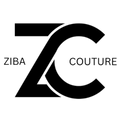How to Spot Knockoff Designer Clothing


It can be infuriating to spend your hard-earned money on a designer product only to find out later that it’s a fake. While some replicas can be easily detected as fraudulent, others have been meticulously crafted to trick even seasoned shoppers. You need to employ specific skills in order to accurately spot knockoff designer goods, and we’re here to tell you everything you need to know.
The Construction
What does the sewing work look like? When it comes to fake bags or clothing, manufacturers don’t care much for clean sewing work, as patterns and line work usually won’t line up. Sloppy sewing is a sure way of differentiating between a designer piece and a knockoff. If the item looks like it was made in a rush by amateurs, chances are it probably was. Also look out for loose threads, zippers that are unravelling or haven’t been sewn on completely.
Branding
Pay close attention to the logo that’s printed on the item. Check for misspellings or any subtleties that seem off to you. If you’re unsure, look up an image of the real designer’s logo and compare it to the logo attached to any potential purchases. Counterfeiters will go to great lengths to trick you, so be on your guard and check everything, including the zipper pulls, name plating, or the soles of shoes. Many designer brands like to place their brand signature in multiple places for marketing and authenticity purposes.
The Price Tag
If the price of a designer item seems too good to be true, then chances are it probably is. This is the best way to determine whether or not a designer bag or pair of shoes is actually a knockoff. If you spot a price that’s less than 30% of the original pricing of any designer product, then walk away. Top brands like Gucci and Prada won’t sell $50 bags, so don’t get sucked into the low prices offered. The best way to make sure you’re buying from a legitimate dealer is to go directly to the source or any authorized deals, like department stores.
Where It’s Located
Checking where the product was made can give you a good idea of what’s real and what isn’t. Many designer goods are crafted in Europe, so if you see a high-end company’s product with a label that says Made in China, be wary of it. Look up the brand and determine where their products are made before making a purchase.
How it Feels
When buying second-hand designer products, finding signs of use should be expected. What you shouldn’t find in real designer goods is a disruption in the quality and overall structure of the item. Designer products are made with quality and longevity in mind, so unless the item is very old, signs of intense wear and tear shouldn’t be present. For example, leather goods for designer brands shouldn’t feel stiff, they should still feel soft and flexible.
Authenticity Documents
Designer goods often come with some form of documentation, whether as a letter of authenticity or a small identification tag. They want their customers to know that they’ve purchased the real thing. If your designer clothes or bag come in a cheap plastic bag without any form of documentation and tags fixed to the item itself, then it’s probably a fake.
At Ziba Couture, you never have to worry about purchasing low quality or counterfeit clothing or accessories. We’re proud to support of Canada’s garment industry and work to provide our customers with a custom experience like no other. Located in Toronto, Ontario, we have stores in the Sheraton Shopping Centre and the Royal York Hotel. Ziba Couture is passionate about providing high-quality customer service. Call anytime to schedule a style consultation with our experts.


Leave a comment